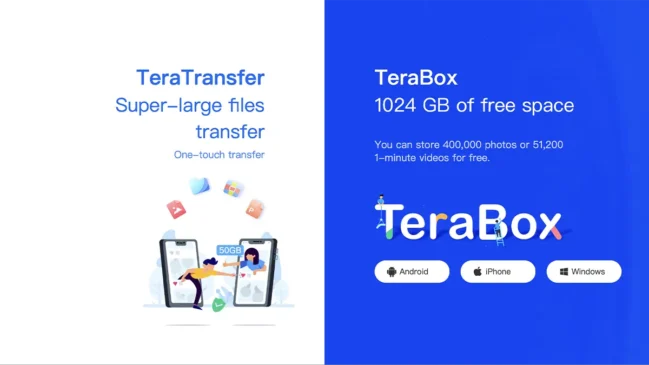
In today’s hectic world, multitasking has become a vital skill to survive in today’s demanding environment. Multitasking doesn’t just involve managing more than one task simultaneously, it entails efficiently navigating both our personal and professional lives. Whether that means trying to balance work and family life, managing multiple projects at the same time, or being an entrepreneur managing multiple clients at the same time, mastering multitasking can bring order out of chaos.

What is Multitasking?
Multitasking refers to engaging in two or more activities simultaneously or switching back and forth between tasks without much fuss or apparent effort. While traditional wisdom viewed multitasking as something to avoid in order to maintain quality of work, more modern approaches see it as an invaluable skill that, when used appropriately, can significantly boost productivity. This practice isn’t simply about keeping yourself busy, it’s also about becoming efficient. Think of it like practicing your mental juggling skills without dropping any balls on the ground! Multitasking, in its broadest sense, means drafting emails while participating in conference calls or making dinner while helping children complete homework assignments. But true multitasking goes beyond mere simultaneous task execution, it involves taking a strategic approach to prioritizing tasks based on urgency and importance, while knowing when and how best to allocate one’s focus and resources.
Why It’s Important in Your Personal Life
Multitasking plays a significant role in creating a balanced and fulfilling lifestyle in your personal life. With today’s hectic lifestyles, managing various aspects of our lives, such as family responsibilities and home maintenance duties, to personal hobbies and social engagements, effectively requires an adept ability to multitask. This skill becomes especially invaluable when unexpected obstacles arise, necessitating rapid adaptation and simultaneous management of multiple issues. Effective multitasking provides greater flexibility and resilience, helping you meet daily demands without succumbing to overwhelming stress. Further, multitasking helps foster an environment in which personal development, family time, and socializing can all coexist harmoniously – an aspect of life that contributes greatly to overall well-being and happiness. By mastering multitasking in your personal life, you not only increase productivity but also achieve a more satisfying lifestyle.
Why It Is Essential in Your Professional Life
Multitasking has become an indispensable skill, impacting productivity, efficiency, and career advancement. Professionals who excel at managing multiple projects, deadlines and communications not only showcase their worth but also gain a competitive advantage. This skill is key in managing the unpredictable ebb and flow of workloads, enabling one to quickly respond to changes without compromising quality or deadlines. This dynamic work approach ensures urgent tasks are addressed promptly while keeping long-term projects on schedule. Multitasking in professional settings also fosters innovation and creativity by encouraging rapid exchange of ideas and problem-solving strategies across different tasks. Multitasking effectively is thus essential to professional growth, nurturing leadership qualities and contributing to business’s resilience in an increasingly fast-paced market environment.
How to Become Good at It
Becoming adept at multitasking takes deliberate practice and strategic approaches. Start by honing your organizational skills. Use digital planners or task lists to prioritize tasks based on urgency and importance. Create a strong focus by eliminating distractions. This may mean setting specific times to check email and using apps that restrict social media use during work hours. Furthermore, understanding your individual rhythm will enable you to take advantage of peak productivity periods for maximum output. Delegating tasks effectively is also key to improving your multitasking abilities, enabling you to focus on tasks requiring your expertise while others manage various aspects of the workload. Additionally, speedy decision-making without compromising accuracy is of utmost importance. Trusting instincts and making quick judgments based on available information are essential elements of effective multitasking processes and outcomes. Finally, regularly reflecting on these outcomes allows for the identification of areas for improvement, making it simpler to adjust and refine approaches over time.
Enhancing Multitasking Abilities through Solitaire
A seemingly straightforward card game such as solitaire can actually boost multitasking abilities considerably, by challenging players to manage several variables and objectives simultaneously. Players must keep track of the colors and numbers of cards, strategize to open hidden ones, plan multiple steps ahead while adapting to new cards as they become available, etc. Cognitive processes mimic those required in multitasking environments, where it is necessary to constantly assess, prioritize, and act upon various tasks and information streams. Solitaire training teaches the brain how to quickly switch focus between different objectives, honing one’s ability to balance multiple tasks without losing sight of their overall purpose. The game promotes disciplined decision-making by encouraging players to make calculated moves based on current and anticipated scenarios, mirroring the swift yet strategic thinking needed in professional settings where time and accuracy are of utmost importance. Solitaire can serve as an effective mental reset, helping increase overall productivity and focus when returning to work tasks. Thus, including solitaire in regular cognitive training regimens can subtly yet significantly sharpen multitasking skills for improved personal and professional efficiency.

Multitasking in Different Situations
Multitasking has become an invaluable skill that is increasingly valuable throughout daily life. From different scenarios where multitasking becomes essential to work efficiency to meeting deadlines efficiently, one common example can be seen in the workplace, where employees must balance emails, meetings, and project tasks simultaneously to meet deadlines while maintaining ongoing communication with coworkers and clients. Academic environments present similar challenges. Students listen to lectures while taking notes, then later balance study time with assignment completion. At home, parents excel at multitasking by simultaneously preparing meals, overseeing homework assignments, and performing household duties, all within limited evening hours. Even while exercising or listening to audiobooks during leisure time, they remain multi-taskers! Multitasking’s seamless incorporation into various aspects of daily life not only highlights its prevalence but also highlights individuals’ constant attempts at multitasking to maximize efficiency and productivity in both personal and professional spheres.
Multitasking’s Pitfalls
While multitasking may appear beneficial, its many pitfalls could erode its perceived advantages. Studies indicate that individuals engaging in constant multitasking may actually experience a decrease in productivity and quality of work due to cognitive demands of multiple tasks simultaneously being placed upon one’s mind. Switching focus from task to task increases cognitive load and increases the chance of error and inefficiency. Stress levels can also increase when multitasking on a consistent basis, as switching back and forth between activities can be mentally draining and lead to feelings of continuous urgency and anxiety. Over time, strain on mental wellbeing can negatively impact physical well-being as well as cause decreased attention span and an inability to concentrate deeply on one task, impairing learning and comprehension. Therefore, it’s crucial that we strike a balance and recognize when multitasking benefits performance or wellbeing rather than hinders it.
Strategies to Overcome Multitasking Drawbacks
To combat the drawbacks of multitasking, developing mindful work habits is vitally important. Implementation of the Pomodoro technique, where work is divided into 25-minute intervals separated by short breaks, has proven an effective strategy in helping focus attention on one task at a time and reduce cognitive load. Prioritizing tasks according to urgency and complexity can also help manage workload more effectively, eliminating the need to switch tasks frequently. Establishing a distraction-free workspace and scheduling specific times to check email and social media can dramatically enhance focus and productivity. Meditation or mindfulness practices can increase cognitive flexibility, making it easier to switch tasks without incurring negative repercussions from multitasking. Adopting such strategies will allow individuals to avoid the drawbacks associated with multitasking while creating a healthier work-life balance.

Conclusion
Like any skill, multitasking has its own learning curve and will require practice, patience, and persistence to perfect. By understanding its significance for both personal and professional lives, recognizing situations that lend themselves to multitasking, and being aware of potential pitfalls, we can develop our multitasking abilities to manage daily life more efficiently. Remember, multitasking doesn’t involve doing everything all at once. It means performing each task well as we complete them one task at a time.







